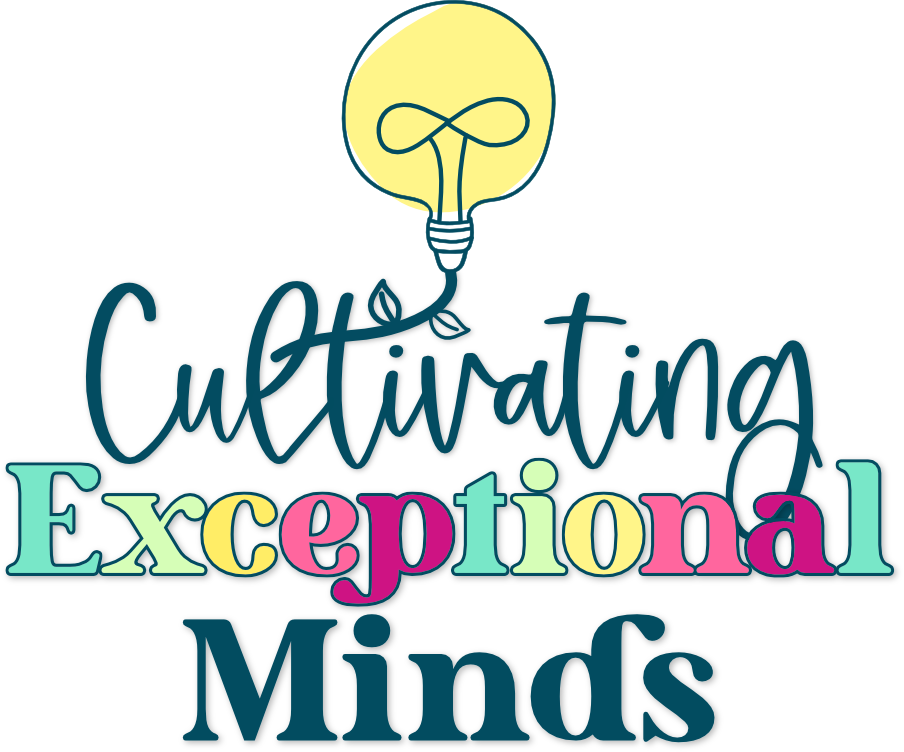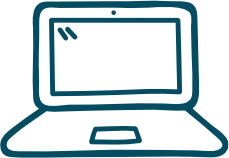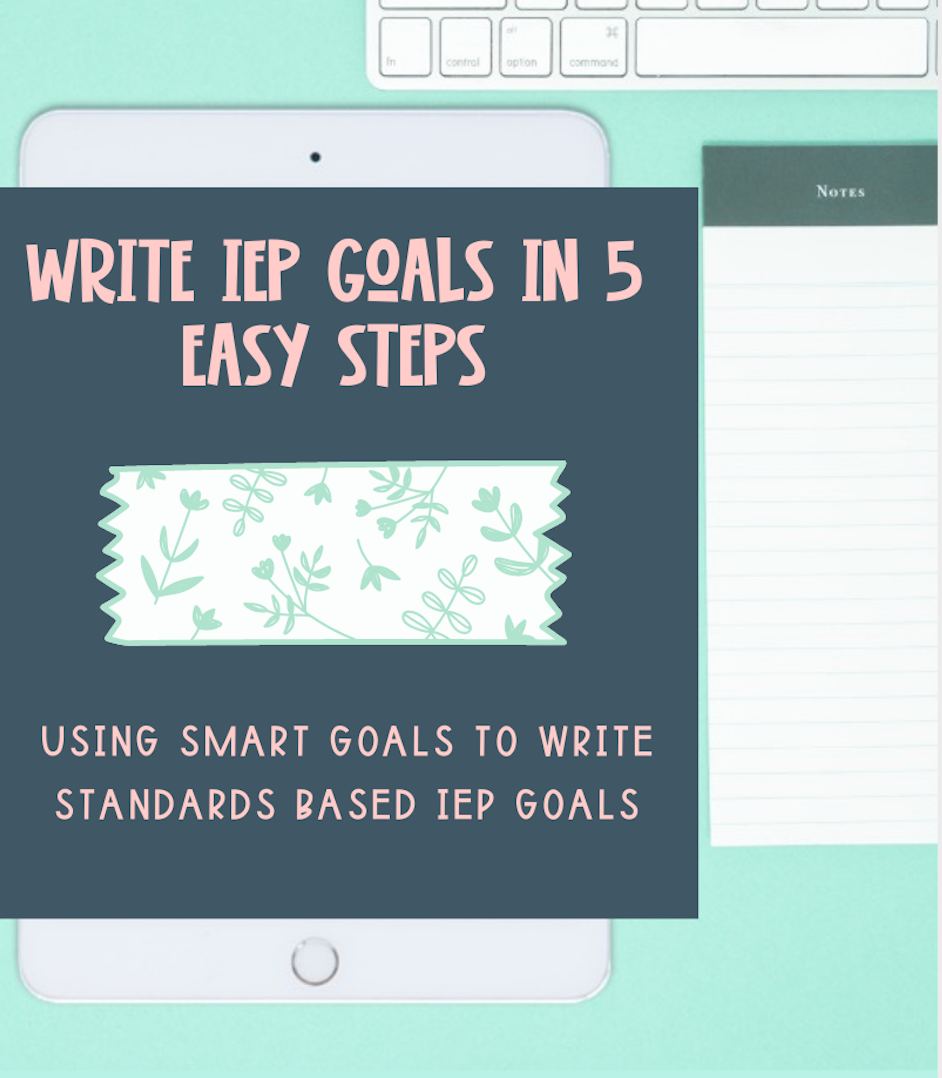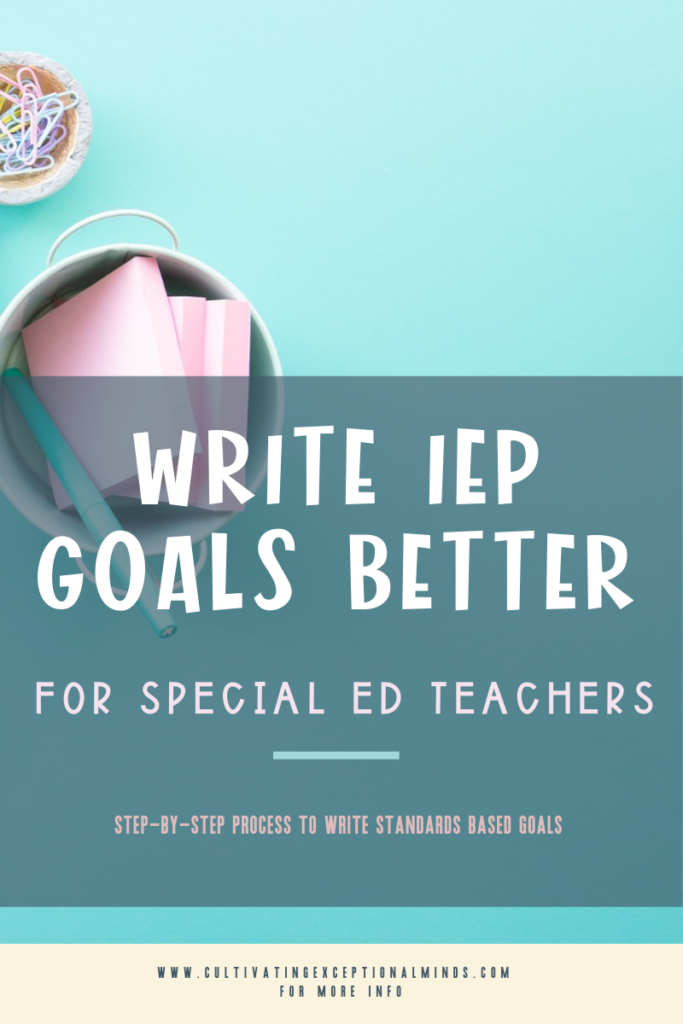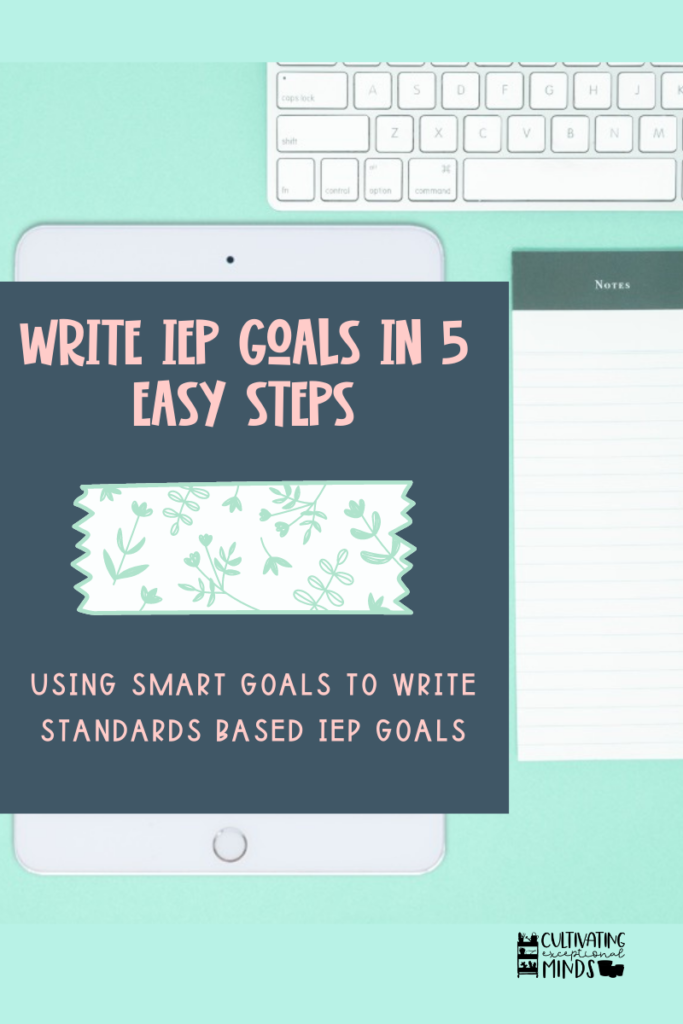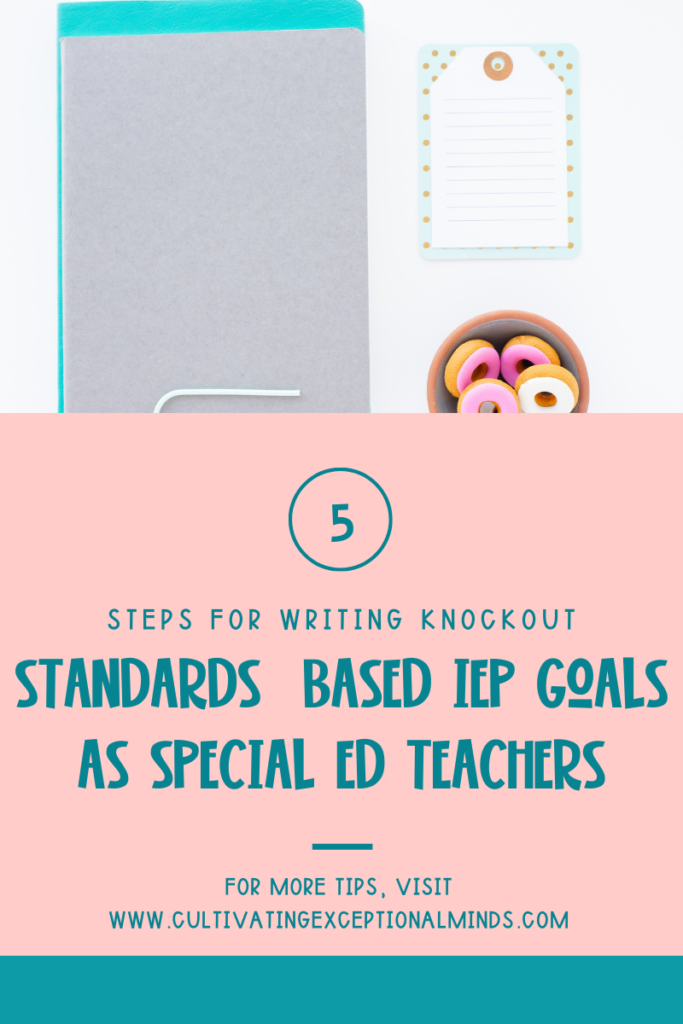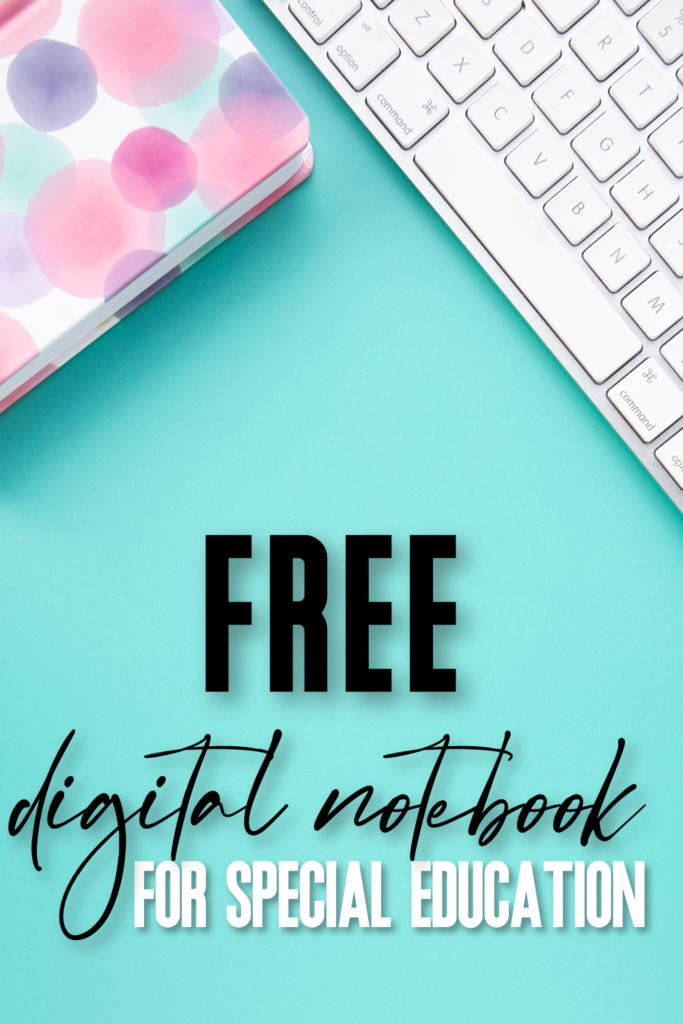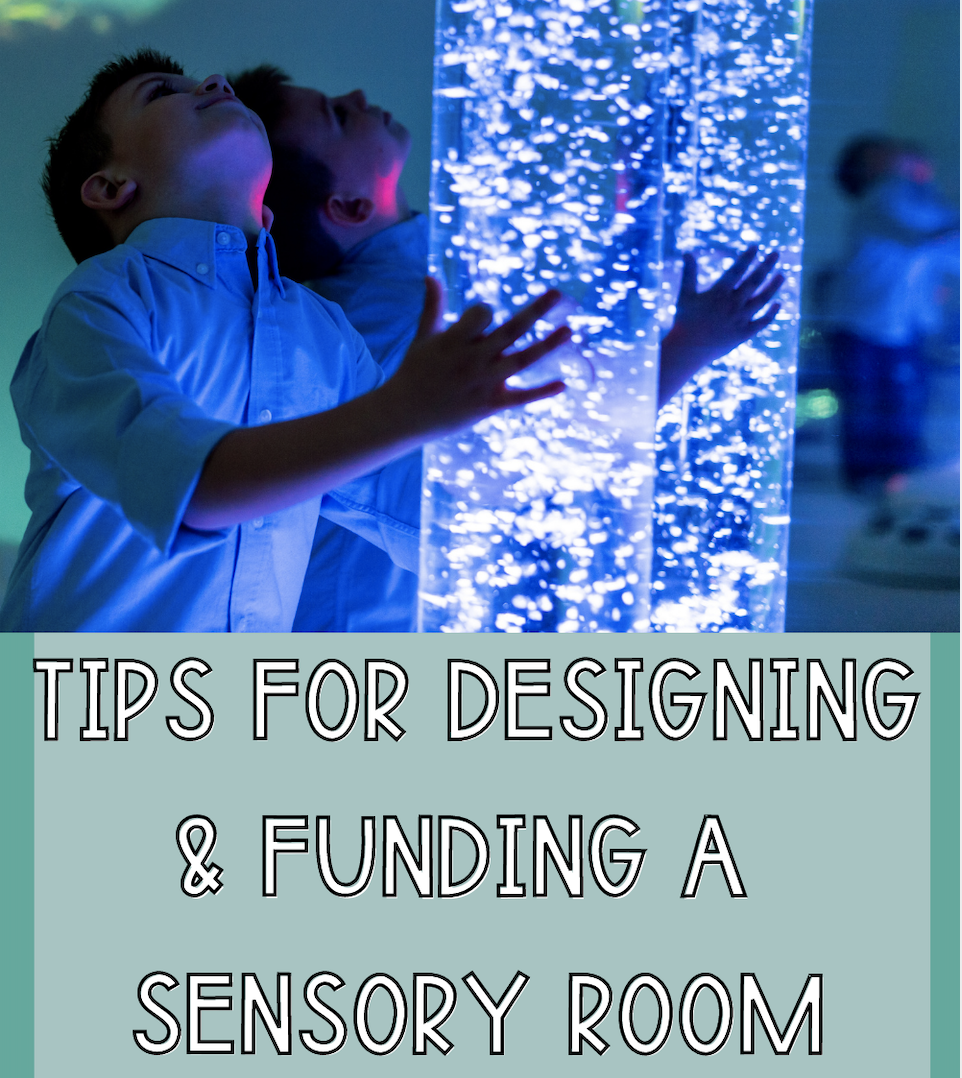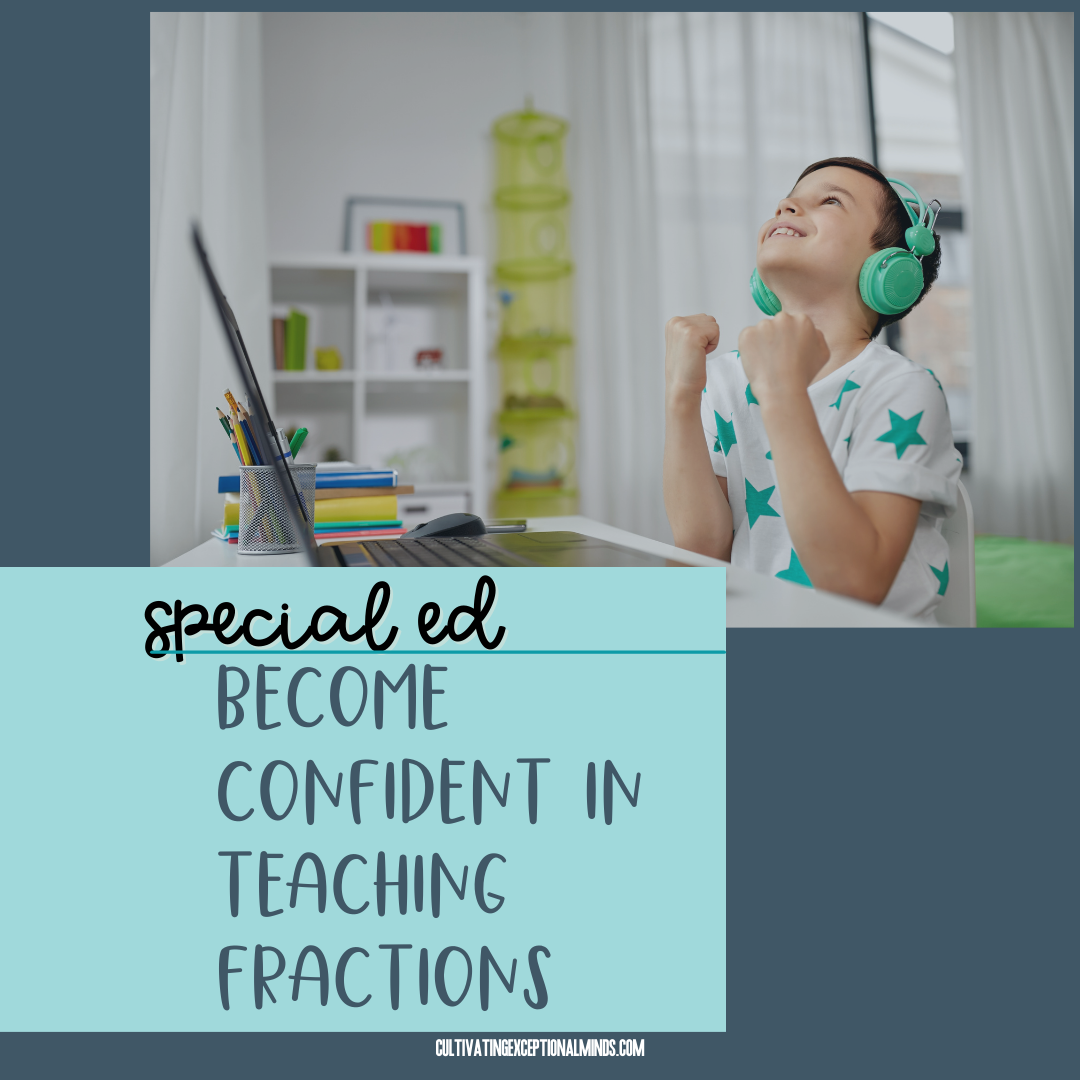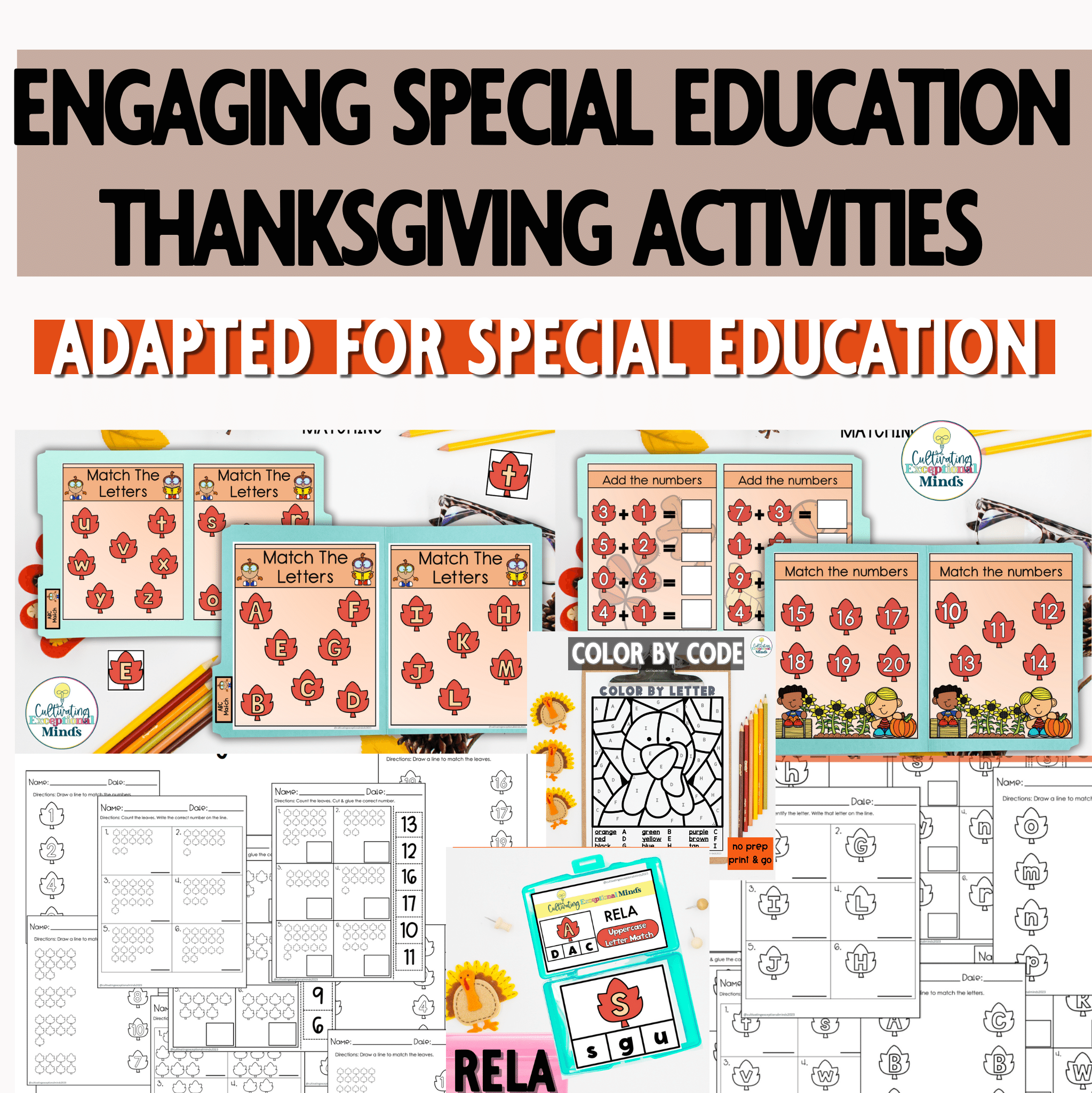The grass is turning greener, the leaves are budding out and the flowers are starting to bloom right before our eyes. Spring is definitely in the air and, at least at my school, that means it is also IEP season. If you are a new teacher, or even a seasoned veteran, IEPs can feel overwhelming and dreadful. I’m here to help with knowing how to write effective IEP goals.
Knowing Your End Game
The goals are one of the most important parts of the IEP. After all, if we do not know what our end game is, then how are we supposed to map a plan for success for our students? If we can begin each year with the end in mind then we are more likely to see our students overcome challenges and obstacles and gain improvements.
Being smart
I like to tie my IEP goals back to the idea of being SMART. Knowing that there are 5 components, like the word SMART, keeps me focused and organized. The acronym is not so much about the actual letter, but rather about the idea of being SMART and using the 5 steps to know how to write effective IEP goals.
Collect data
The S covers the first thing you need to do when writing IEP goals and that is to collect some data on your students. You need to know where they are in order to know where you want them to go. (Sounds a little Dr. Suess-esk, huh?) The data will help you determine the student’s present level. For example, if you are writing a math calculation goal for a student about adding decimals, then you need to know what they already know how to do at an independent level. Then you will stretch their goal just outside their comfort zone so that they continue to grow. This example could easily be collected by having the student complete some problems involving addition of decimals.
make it measurable
The M reminds us that our goal needs to be measurable. This one is a little easier because it does actually begin with our letter. A good goal will have some measurability to it…we have to know when a student is successful.
add supports
The A is all about the supports that the student may need. It might be that the student needs a manipulative in order to achieve success. This will need to be noted in this part of the IEP goal.
what is mastery?
The R tells us what the level of mastery is. We know our goal has to be able to be measured, but we also know that we don’t expect our students to get it right 100% of the time. We need to have a mastery level that is appropriate based on where the student is. It might be the right thing for the student to only answer correctly 75% of the time. This would be true if they are only answering correctly 65% of the time.
time frame
And last, but certainly not least, is the letter T. This is another easy one because it represents the time frame of the goal. The goal could be written for the entire school year, or it may be something more short term. It might be that the goal needs to be periodically updated because the student has a high amount of growth. No matter what, we need to know when we are collecting data to determine success.
using the formula
Keeping things SMART will make life easier for you and you will quickly find that writing IEP goals does not have to be an intimidating task. The more you practice, the better you will become and your confidence level will grow. Using a base formula that is easily customized will keep you on track. Just remember “by the end of ______, when provided with ______, the student will ______. You can also check out some IEP goal banks, like this one, to give you a springboard for starting. You will need to change some things up to be specific to your student, but it can be helpful if you are feeling stuck with wording or formatting.
Don’t let IEPs stress you out! I know that you can do this…let me know how I can help! And make sure you check out the Be the Exception Podcast for even more tips and ideas!
Want to Try a free digital notebook perfect for writing out professional developments not or brain dumping IEP goals? Check out the Free Digital Exceptional Notebook to see if it is something you’d enjoy using.
Did you know, there is a weekly podcast for special education teachers full of actionable takeaways, trending teaching strategies and interviews from effective special ed teachers across the country. Make sure to check out Be The Exception podcast and subscribe to it on Apple and Spotify
Want to know what tool I use with my planner? Check my Amazon Storefront with them listed out there.
